Reimagining Veterinary Supplies with VetCart Australia: Your One-Stop Wholesale Supplier
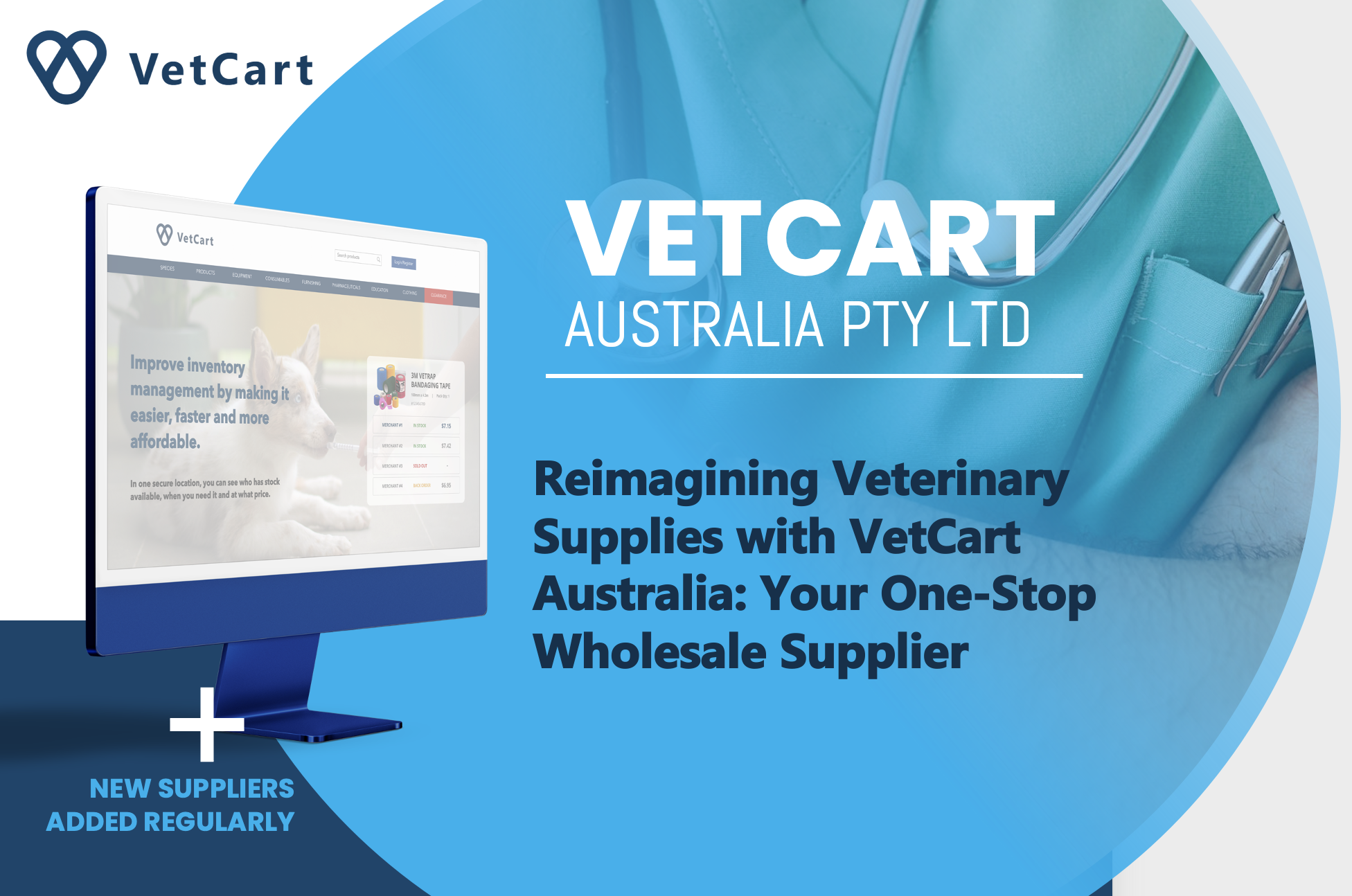
In the ever-changing landscape of veterinary services, having a reliable and efficient supply chain is absolutely crucial for the success of your practice. That's where VetCart Australia comes in. It's a game-changer in the wholesale veterinary supply market, acting as an aggregator to sell a broad range of vet supplies direct to clinics across Australia.
VetCart is an innovative platform that bridges the gap between veterinarians and suppliers, acting as an aggregator to provide an effortless shopping experience. As an online marketplace, it sells wholesale veterinary supplies direct to vets, enabling clinics across Australia to access a vast array of products quickly, efficiently, and economically.
Let's take a detailed squiz at why VetCart is becoming the go-to platform for Aussie veterinarians and how it's boosting the efficiency of veterinary practices throughout the nation.
Unrivalled Product Range
VetCart offers a truly extensive catalogue of veterinary supplies, from pharmaceuticals and surgical gear and day-to-day consumables. This one-stop shop approach means you can nab all the gear you need from one place, saving you precious time and simplifying your stock management.
Speedy Supply and Distribution
VetCart’s model is all about efficiency. With a distribution network that stretches across the length and breadth of Australia, you're guaranteed to get the supplies you need, whether your clinic is in the heart of Sydney or out in the bush. VetCart’s commitment to accessibility makes it a fair dinkum solution for all vets.
Fair Dinkum Pricing
Buying direct from wholesalers traditionally involves negotiating high minimum order quantities, which can result in excess stock and storage issues. VetCart sidesteps this problem by aggregating demand. It allows practices to purchase exactly what they need when they need it, and still benefit from the competitive wholesale pricing usually only available to large-scale buyers.
Quality You Can Trust
Quality is key when it comes to vet supplies, and VetCart has got you covered. The platform brings together a wide range of suppliers, each of whom has been given the once-over to make sure their products meet the highest standards. This means you can buy with confidence, knowing that the supplies you get will be up to the task.
Simple and Straightforward Ordering
VetCart’s user-friendly platform makes ordering a breeze. With just a few clicks, you can choose your products, place your order, and keep track of it until it arrives. This eliminates the need for dealing with multiple suppliers and streamlines your purchasing process, leaving you with more time to focus on your patients.
In a nutshell, VetCart Australia is a true game-changer in the way veterinary practices source their supplies. Its wide product range, top-notch efficiency, and unwavering commitment to quality make it an invaluable resource for Aussie veterinarians. If you haven't yet checked out what VetCart has to offer, now's the time to take a gander. You might find it's the solution you've been looking for to streamline your practice's supply chain.
Essential Veterinary Supplies for Your Cat or Kitten
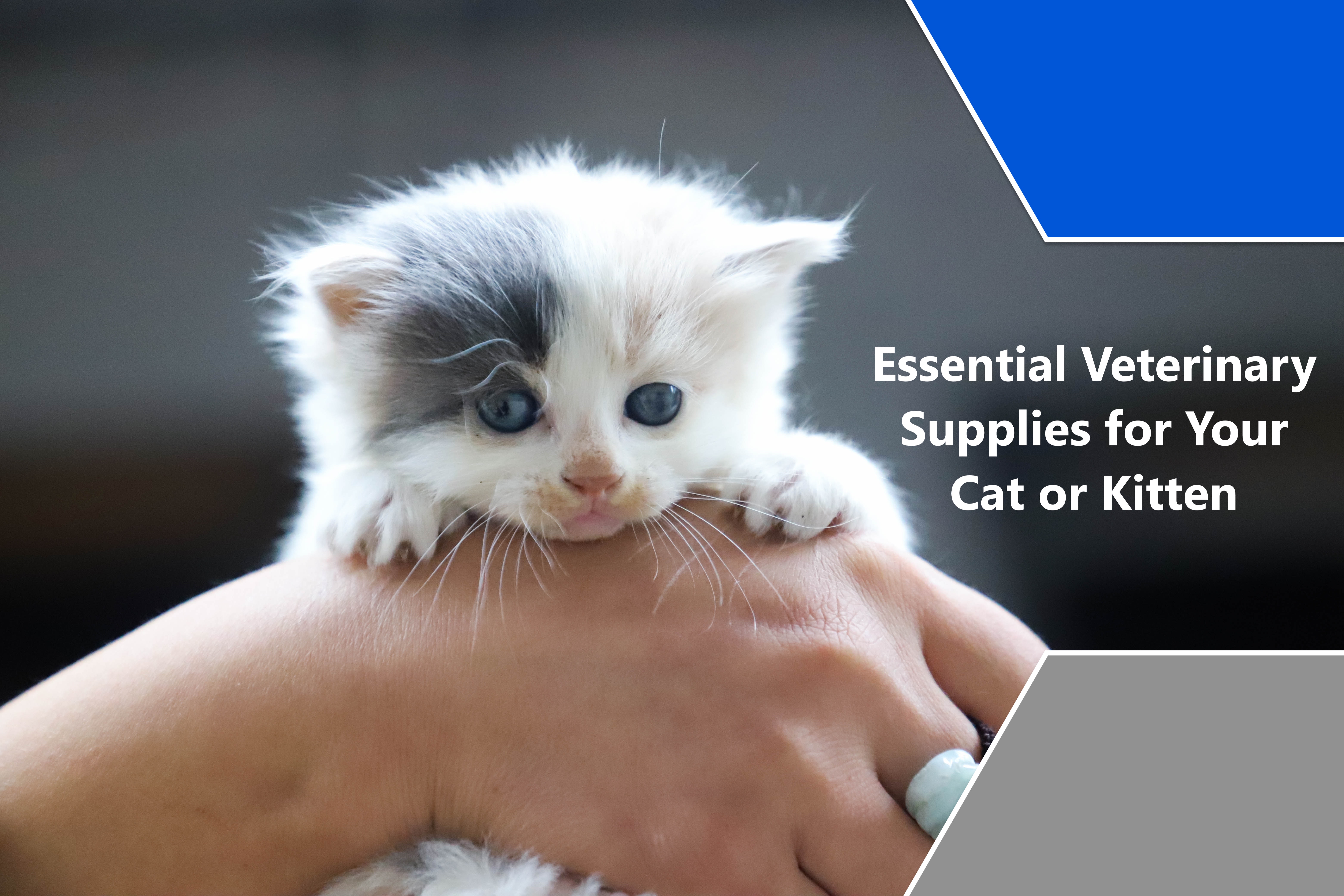
Essential Veterinary Supplies for Your Cat or Kitten: A Comprehensive Guide to Cat & Kitten Supplies
As a cat or kitten owner, you want to ensure that your furry friend stays healthy and happy. This means providing them with the best possible care, including essential veterinary supplies. From flea and tick prevention to dewormers and supplements, veterinary supplies are essential for maintaining your cat's health and well-being. In this article, we'll discuss the essential cat and kitten supplies that every pet owner should have, with a focus on veterinary supplies.
Flea and Tick Prevention:
Fleas and ticks are common parasites that can cause serious health problems for cats. Fleas can cause skin irritation, flea allergy dermatitis, and anemia. Ticks can transmit diseases such as Lyme disease. To prevent these parasites from infesting your cat, it's important to use flea and tick prevention products. Some popular options for cats include topical treatments, collars, and oral medications.
Topical treatments are applied directly to the skin and can provide protection for up to a month. These treatments contain insecticides that kill fleas and ticks on contact. Examples of topical treatments for cats include Frontline Plus, Advantage II, and Revolution. Collars are another option for flea and tick prevention. These collars release insecticides that repel and kill fleas and ticks. Seresto collars are a popular option for cats as they provide up to eight months of protection. Oral medications are also available for flea and tick prevention. These medications are usually given once a month and work by killing fleas and ticks when they bite your cat. Some popular oral medications for cats include Comfortis and Nexgard.
Dewormers:
Intestinal parasites are a common problem for cats, especially kittens. These parasites can cause a range of symptoms, including diarrhea, vomiting, and weight loss. To prevent and treat intestinal parasites, it's important to use a high-quality dewormer. Your veterinarian can recommend a dewormer that is safe and effective for your cat.
Dewormers work by killing the intestinal parasites that are present in your cat's digestive tract. There are several types of dewormers available for cats, including pyrantel pamoate, fenbendazole, and praziquantel. Pyrantel pamoate is effective against roundworms and hookworms. Fenbendazole is effective against roundworms, hookworms, and whipworms. Praziquantel is effective against tapeworms. Your veterinarian can recommend the best dewormer for your cat based on their age, weight, and overall health.
Vitamins and Supplements:
Vitamins and supplements can help support your cat's overall health and immune system. Probiotics can help improve digestion and boost immune function, while omega-3 fatty acids can help improve coat and skin health. Joint supplements can help prevent arthritis and joint pain in older cats. As with any supplement, it's important to choose a high-quality product that is safe for your cat.
Probiotics are beneficial bacteria that can help improve digestion and support a healthy immune system. They are especially helpful for cats with gastrointestinal issues or those who are on antibiotics. Omega-3 fatty acids are essential fatty acids that are important for maintaining healthy skin and coat. They also have anti-inflammatory properties that can help improve joint health. Joint supplements contain ingredients like glucosamine and chondroitin that help maintain healthy joint function and reduce joint pain.
When choosing a vitamin or supplement for your cat, it's important to choose a product that is specifically formulated for cats. Human supplements may contain ingredients that are harmful to cats, so it's best to avoid them. Your veterinarian can recommend a safe and effective supplement for your cat based on their individual needs.
Dental Care Products:
Dental problems are a common issue for cats, and they can cause pain, infection, and even organ damage if left untreated. To prevent dental problems, it's important to provide your cat with proper dental care, including regular brushing and dental cleanings. There are also many dental care products available for cats, including toothbrushes, dental chews, and water additives.
Toothbrushes and toothpaste formulated specifically for cats are available and can be used to brush your cat's teeth. Brushing your cat's teeth regularly can help prevent plaque buildup and tartar, which can lead to dental disease. Dental chews are also available and can help clean your cat's teeth while they chew. These chews contain enzymes that help break down plaque and tartar. Water additives can also be added to your cat's drinking water to help reduce plaque and tartar buildup.
Your veterinarian can recommend the best dental care products for your cat based on their individual needs. They can also perform regular dental cleanings to help prevent dental problems and keep your cat's teeth and gums healthy.
Prescription Medications:
Prescription medications may be necessary for cats with certain health conditions, such as arthritis, diabetes, or heart disease. Your veterinarian can prescribe medications that are safe and effective for your cat and can help manage its condition.
Arthritis is a common condition in older cats and can cause joint pain and stiffness. There are several medications available that can help manage arthritis pain and improve joint function. Non-steroidal anti-inflammatory drugs (NSAIDs) are commonly used to manage arthritis pain in cats. Glucosamine and chondroitin supplements can also be helpful for maintaining healthy joint function.
Diabetes is a metabolic disorder that affects cats and can cause high blood sugar levels. Insulin injections are often necessary to manage diabetes in cats. Your veterinarian can prescribe the appropriate insulin dosage for your cat and can teach you how to administer the injections.
Heart disease is another common health condition in cats. Medications such as diuretics and ACE inhibitors can help manage heart disease symptoms and improve your cat's quality of life.
It's important to follow your veterinarian's instructions when giving prescription medications to your cat. Some medications may have potential side effects, and it's important to monitor your cat for any adverse reactions. Your veterinarian can also provide guidance on the proper dosage and administration of medications.
In addition to prescription medications, there are also over-the-counter (OTC) medications that can be useful for treating minor health conditions in cats. However, it's important to consult with your veterinarian before giving your cat any OTC medications, as some may be harmful or ineffective for cats.
Some common OTC medications for cats include:
Flea and tick preventatives:
Flea and tick preventatives come in various forms, including topical treatments, collars, and oral medications. It's important to choose a flea and tick preventative that is specifically formulated for cats, as some products designed for dogs can be toxic to cats.
Antihistamines:
Antihistamines can be used to treat allergic reactions in cats. However, not all antihistamines are safe for cats, and dosages must be carefully calculated based on your cat's weight.
Laxatives:
Laxatives can be used to treat constipation in cats. However, not all laxatives are safe for cats, and dosages must be carefully calculated based on your cat's weight.
Ear cleaners:
Ear cleaners can be used to clean your cat's ears and prevent ear infections. It's important to choose an ear cleaner that is specifically formulated for cats, as some products designed for dogs can be harmful to cats.
When using any medication for your cat, it's important to follow the instructions carefully and monitor your cat for any adverse reactions. If you notice any unusual symptoms or behaviours, contact your veterinarian immediately.
In conclusion, there are many different types of veterinary supplies available for cats, ranging from basic necessities like food and litter to more specialised products like dental care supplies and prescription medications. By working closely with your veterinarian and selecting the right products for your cat's individual needs, you can help keep your feline companion healthy and happy for years to come.
Best Practice Marking of Lambs in Australia
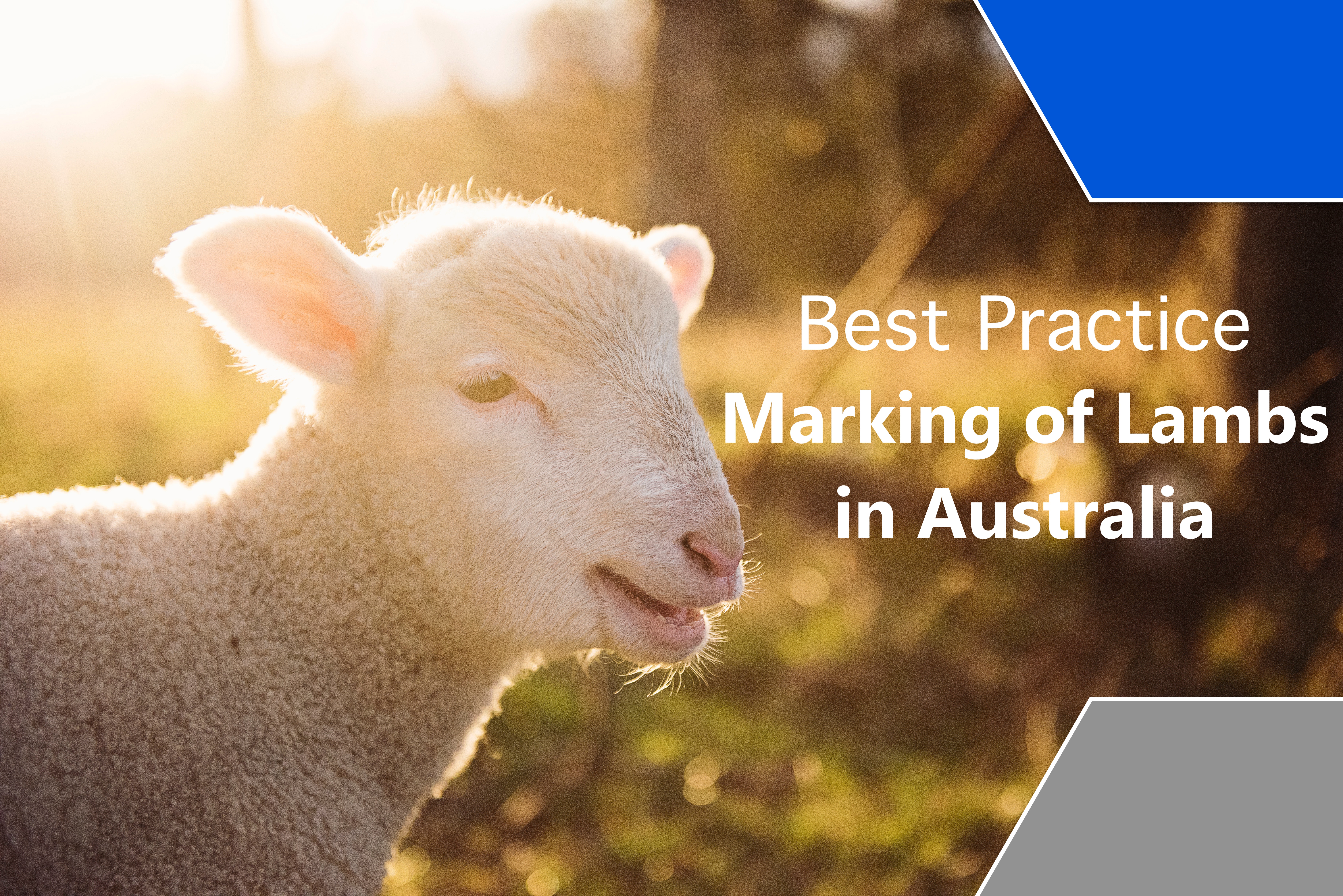
Marking of lambs is an essential practice in the Australian veterinary industry that ensures proper identification and management of individual animals. It is a critical step in monitoring their growth, health, and productivity, and is a valuable tool for farmers to keep track of the health of their flocks. In this blog, we will discuss the best practices for marking lambs in Australia, including the various methods used, the ideal age to mark lambs, the benefits of each method, and the equipment required.
Methods of Marking Lambs:
· Ear tagging:
This method involves attaching a plastic or metal tag to the ear of the lamb. Ear tags are available in a variety of sizes and colors to suit the needs of the farmer. This method is simple, fast, and cost-effective, but the tags can sometimes become lost or fall off, making it difficult to keep track of the lambs. When choosing ear tags, it's important to consider the size and shape of the lamb's ear and the environment in which the lamb will be raised, as certain tags may be more suitable for certain conditions. An ear tag applicator is used to attach the tag to the ear, and it's important to make sure the applicator is properly adjusted to avoid injury to the lamb.
· Ear notching:
This method involves cutting a specific pattern into the lamb's ear to provide a permanent identifier. It requires a special tool, such as an ear notching pliers, to perform, and can be more invasive than ear tagging. The pattern is specific to the individual lamb, making it easy to identify the lamb even if the tag is lost or falls off. When using ear notching, it's important to take care not to cut too deeply or too close to the edge of the ear, as this can cause injury or disfigurement. It's also important to use proper technique to ensure the notches are clean and precise, making them easily recognizable over time.
· Ear tattooing:
This is the most permanent method of marking lambs and involves injecting ink into the ear to create a unique identifier. This method is more invasive than ear tagging or ear notching, but it provides a long-lasting, easily recognizable identifier that cannot be lost or altered over time. A tattoo pliers or a tattoo gun are typically used to perform ear tattoos. When choosing to use ear tattooing, it's important to use an ink that is safe for the animal and that will not fade over time. It's also important to use proper technique to ensure the tattoo is clean and precise, making it easily recognizable for years to come.
Ideal Age to Mark Lambs:
- Lambs should be marked at a young age, such as within the first week of life. This allows the markings to be made while the lamb's ear is still small and flexible, making it easier to perform the marking and reducing the risk of injury to the animal. In addition, marking lambs at a young age helps to ensure that the markings will be permanent and easily recognizable as the lamb grows. It's also important to consider the health and wellbeing of the lamb when choosing to mark it. Lambs that are sick or otherwise not in good health should not be marked until they have fully recovered.
Benefits of Marking Lambs:
· Unique identification:
Marking lambs provides a unique identifier for each animal, making it easier to track their growth, health, and productivity. This information is crucial for managing the flock and making informed decisions about feeding, breeding, and other management practices.
· Prevention of theft or loss:
Marked lambs can be quickly and easily identified in the event of theft or loss, reducing the risk of fraud or other criminal activities.
· Prevention of inbreeding:
Marking lambs can help to prevent inbreeding by allowing farmers to keep track of the genetic relationships between animals in the flock. This is particularly important in sheep farming, where close relatives are often bred together to maintain certain traits.
· Disease control and management:
Marking lambs is an important step in disease control and management. By tracking the health of individual animals, farmers can identify sick or diseased animals early on and isolate them from the rest of the flock, reducing the risk of losing entire flocks to illness.
Equipment Required:
· Ear tag applicator:
An ear tag applicator is used to attach ear tags to the lamb's ear. The applicator is typically made of metal or plastic and is adjusted to suit the size and shape of the lamb's ear. It's important to choose an applicator that is durable, easy to use, and that will not cause injury to the lamb. Some applicators have locking mechanisms to prevent the tag from falling off, while others have indicators to show when the tag has been properly attached.
· Ear notching pliers:
Ear notching pliers are a specialized tool used to cut specific patterns into the lamb's ear. The pliers are usually made of steel or another durable material and have a specially designed cutting blade that is sharp enough to make precise cuts into the lamb's ear. When choosing ear notching pliers, it's important to consider the size and shape of the lamb's ear and the environment in which the lamb will be raised, as certain pliers may be more suitable for certain conditions.
· Tattoo pliers or tattoo gun:
Tattoo pliers or a tattoo gun are used to inject ink into the lamb's ear to create a permanent identifier. The pliers or gun are usually made of metal or plastic and have a mechanism for holding the ink cartridge in place. When choosing a tattoo pliers or gun, it's important to consider the size and shape of the lamb's ear and the environment in which the lamb will be raised, as certain models may be more suitable for certain conditions. It's also important to choose an ink that is safe for the animal and that will not fade over time.
In addition to the equipment required for each method, it's important to have the necessary supplies and materials on hand, such as replacement ear tags, ink cartridges, and a disinfectant solution to clean the equipment between uses. It's also important to have a safe and secure area in which to perform the marking, with adequate lighting and a clean surface for the lamb to rest on. By taking these steps and using the proper equipment, farmers can ensure that their lambs are marked safely, efficiently, and effectively.
In conclusion, marking lambs is an important part of the veterinary industry in Australia, providing a way to identify individual animals and keep track of their health and management throughout their lives. There are several methods available for marking lambs, including ear tagging, ear notching, and ear tattooing. Each method has its own advantages and disadvantages, and farmers should choose the one that best suits their needs and the needs of their lambs. By using the proper equipment, supplies, and materials, and by following best practices and guidelines, farmers can ensure that their lambs are marked in a safe, efficient, and effective manner. With the right approach, marking lambs can be an important tool for improving animal health and welfare and for managing livestock more effectively.
Horse Supplies - Your One Stop Shop for Equine Supplies
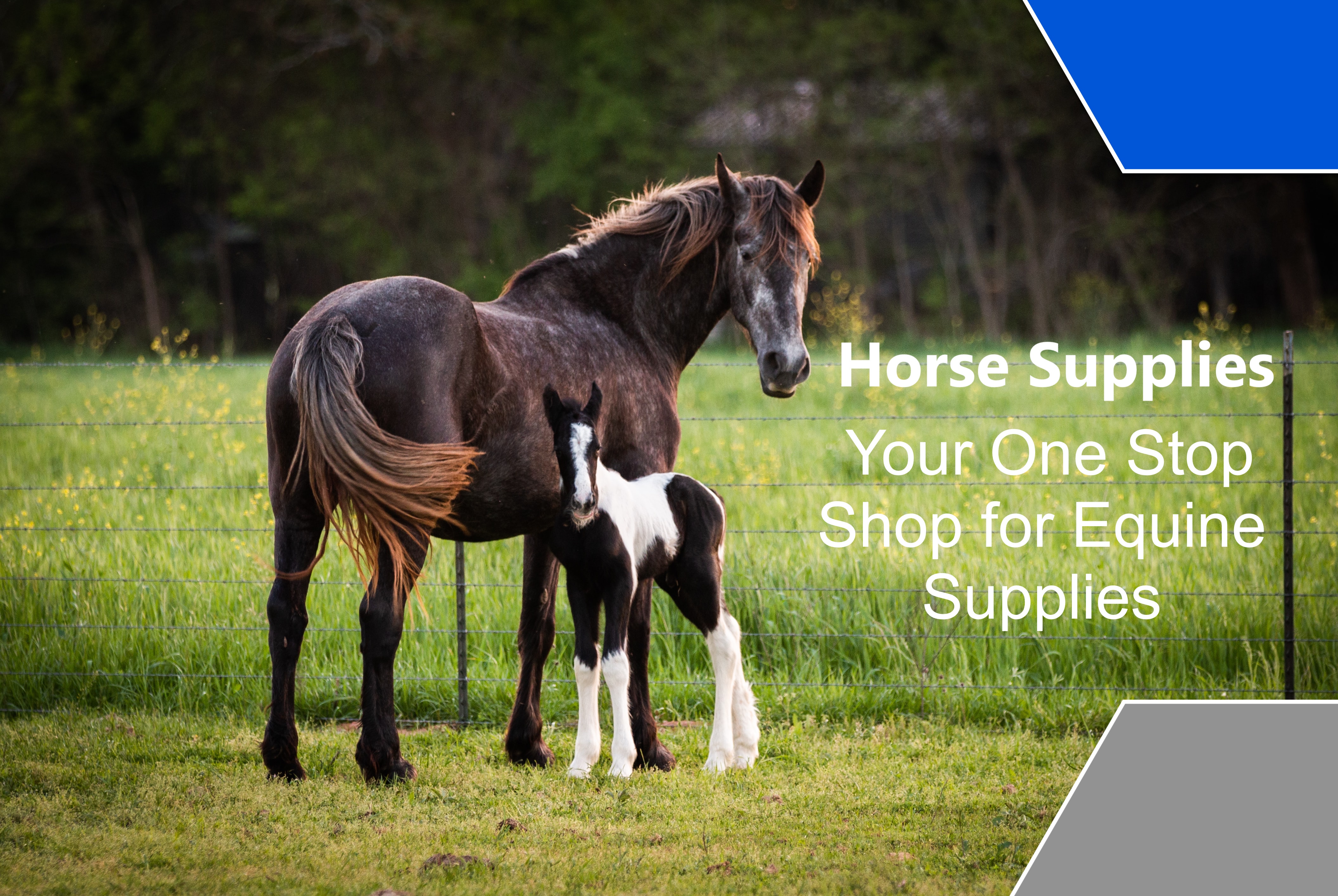
Horse Supplies - Your One Stop Shop for Equine Supplies
As a veterinarian working with horses, it is essential to have the right equipment and supplies on hand to ensure the health and well-being of your equine patients. In this blog, we will outline the key pieces of equipment and supplies for a horse that are essential for any veterinarian working with equines in Australia.
Vaccinators & Injectors - Drench Inject Pour-On - Animal Health
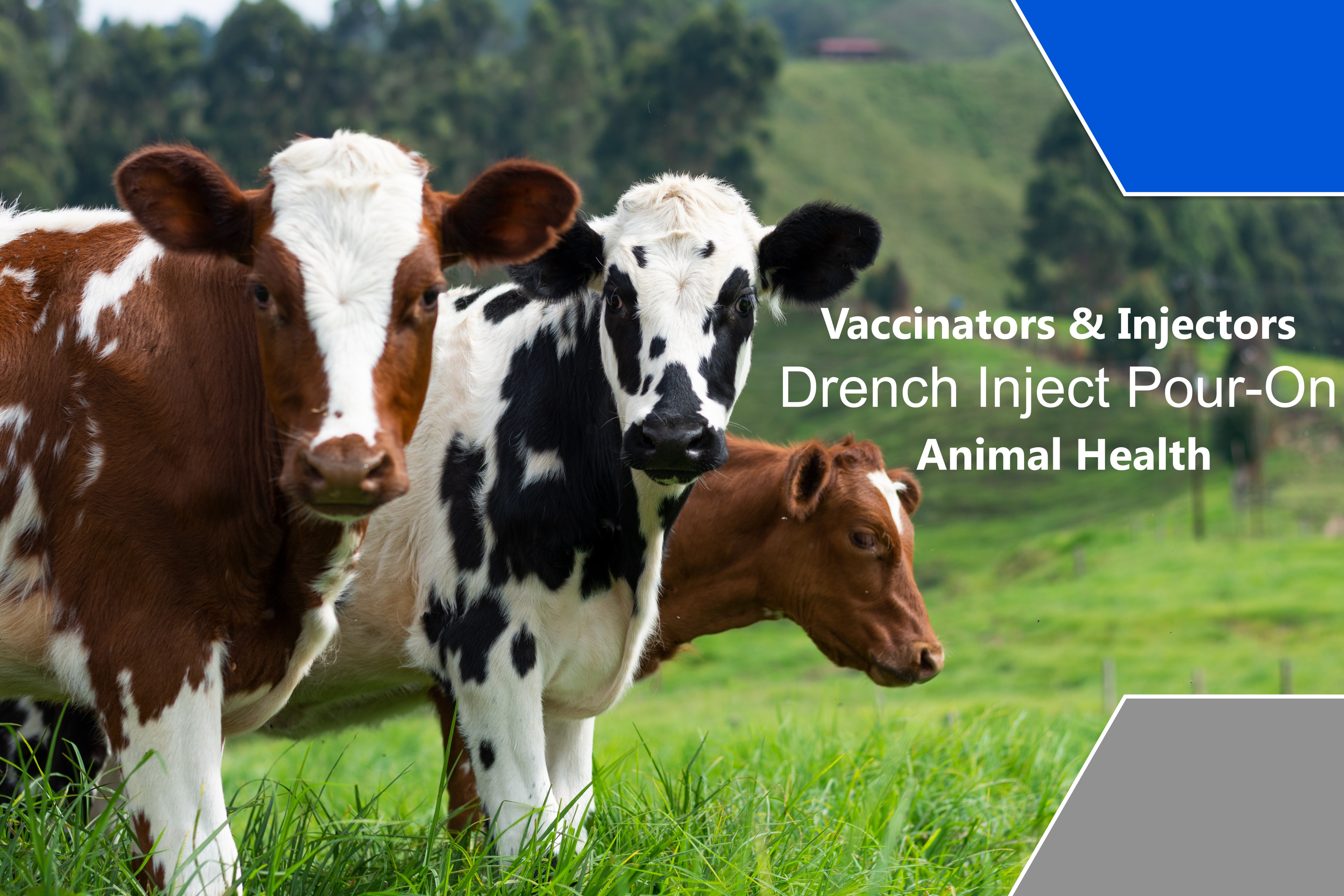
Vaccinators & Injectors - Drench Inject Pour-On - Animal Health
As the demand for animal health products continues to grow in Australia, it is essential for veterinarians, farmers, and livestock owners to have access to reliable and effective vaccinators and injectors. These tools are crucial in preventing and controlling the spread of diseases in livestock, which can have significant impacts on the health and productivity of animals.

